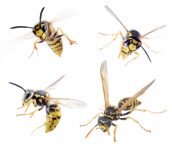Are You Keeping Sharps and Bloodborne Pathogens Exposure Records?
Usually, if you’re not subject to the program requirements of a standard, you’re not subject to its recordkeeping requirements, either. Bloodborne pathogens exposure is an exception. You may not be required to have a bloodborne pathogens exposure control program, but OSHA’s recordkeeping standard requires all employers to keep records of sharps exposure incidents, and some […]










